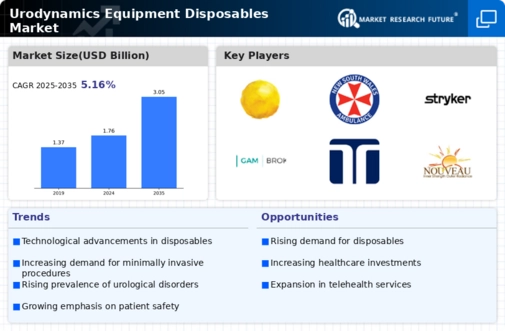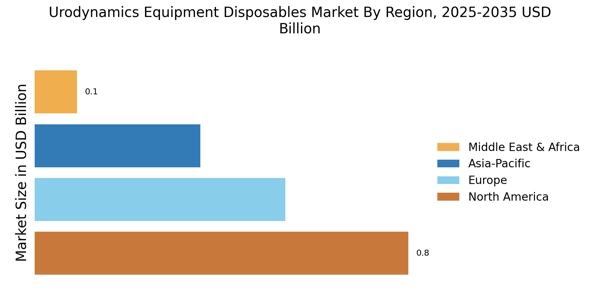Rising Healthcare Expenditure
The increase in healthcare expenditure across various regions is a significant driver for the Urodynamics Equipment Disposables Market. As governments and private sectors allocate more funds towards healthcare, there is a corresponding rise in the adoption of advanced medical technologies, including urodynamics equipment. This trend is particularly evident in emerging markets, where investments in healthcare infrastructure are expanding access to diagnostic services. The World Health Organization has reported that healthcare spending is expected to rise, which will likely facilitate the growth of the urodynamics disposables market as facilities upgrade their equipment.
Growing Focus on Preventive Healthcare
There is a notable shift towards preventive healthcare, which is influencing the Urodynamics Equipment Disposables Market. As awareness of urological health increases, more individuals are seeking early diagnosis and treatment for urological conditions. This trend is supported by public health campaigns and educational initiatives that emphasize the importance of regular urological assessments. Consequently, healthcare providers are more inclined to invest in disposable urodynamics equipment to meet the rising demand for preventive care. This focus on early intervention is expected to drive market growth as patients prioritize their health.
Regulatory Support for Disposable Devices
Regulatory bodies are increasingly endorsing the use of disposable medical devices, which is beneficial for the Urodynamics Equipment Disposables Market. The emphasis on patient safety and infection control has led to stringent regulations that favor single-use products. For instance, the FDA has implemented guidelines that streamline the approval process for disposable urodynamics equipment, thereby encouraging manufacturers to innovate and expand their product lines. This regulatory support not only enhances market growth but also ensures that healthcare facilities can provide safer and more hygienic care to patients.
Increasing Prevalence of Urological Disorders
The rising incidence of urological disorders, such as urinary incontinence and bladder dysfunction, is a primary driver for the Urodynamics Equipment Disposables Market. As populations age, the prevalence of these conditions is expected to escalate, leading to a heightened demand for diagnostic and therapeutic solutions. According to recent estimates, nearly 33 million individuals in the United States alone suffer from overactive bladder, which necessitates the use of urodynamics equipment. This growing patient population is likely to propel the market forward, as healthcare providers seek effective and efficient disposable solutions to manage these disorders.
Technological Innovations in Urodynamics Equipment
Technological advancements are transforming the Urodynamics Equipment Disposables Market, as manufacturers develop more sophisticated and user-friendly devices. Innovations such as wireless urodynamics systems and advanced software for data analysis are becoming increasingly prevalent. These technologies not only improve the accuracy of diagnoses but also enhance patient comfort during procedures. The market is projected to grow significantly, with estimates suggesting a compound annual growth rate of over 6% in the coming years, driven by these technological improvements that cater to both healthcare providers and patients.


















Leave a Comment